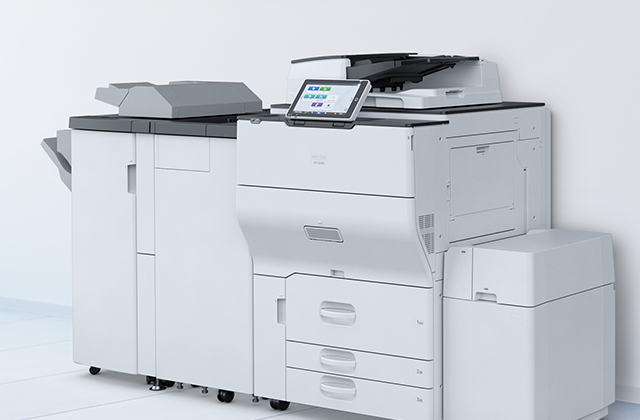Three pitfalls to avoid in the race to business agility
Ricoh Europe, 26 April 2018 – There is no single “true path” for innovation. In fact, there are as many ways to innovate as there are problems that need solving.
The speed and complexity of today’s market means SMBs must be able to quickly make the most of new opportunities and proactively manage change that could threaten their very survival. To maintain a healthy business, it’s imperative that SMBs place agility at the heart of their organisation.
Today, understanding agility is key to long-term success. With an agile approach, SMB leaders can more easily pivot their business model, drop unpopular products and introduce new ones, and update the services they offer in response to changing customer expectations as and when they need to.
In the context of business, agility is both the mind-set and the ability to respond quickly to changing market pressures. New research commissioned by Ricoh Europe reveals that 75% of SMB leaders place ‘improving agility’ high on their business agenda. This is undoubtedly great news. But in the race to attaining agility there are pitfalls that even the most savvy SMB leaders might fail to avoid. Here are three areas to consider:
- Processes that slow employees down and put them in a spin. Internal processes are in danger of becoming a ‘blind spot’ that too many SMB leaders ignore in their effort to become more agile. Our research found that 73% of SMB leaders failed to mention office processes when looking to improve their agility. Often these leaders forget that agility and process flexibility go hand in hand. This can only mean that internal processes are not scrutinised as rigorously as they should be. SMB leaders need to examine their company’s processes with a fresh eye. One way to combat this is by investing in new tools that update traditional physical and paper-based ways of working, such as e-invoicing and document management.
- Spending budgets on the latest craze, rather than what you need. Even though SMB leaders understand the importance of technology in helping them improve their agility, 37% say they lack the resources to invest in new technology. When budgets are limited, prioritising the right workplace technology investment is crucial to thriving in an increasingly fast-paced and digitally driven environment. Our research into the attitudes of employees towards new technologies revealed that 31% believe using old technologies is the single biggest factor stopping their business moving forward. For SMB leaders, identifying the technology that’ll have the most tangible long-term benefit for their staff rather than seeing it as simply an opportunity to save cost in the short-term.
- Steadfastly sticking to old habits. In business, the general preferred rule of thumb is a clear structure where all employees follow a set management framework. At face value, this model might initially make sense, but it leaves no room for employees that are bold, innovative thinkers to contribute creative ideas that will and deliver new visions for the future. It’s no surprise that this kind of management culture fails. Rigidity doesn’t allow businesses to capitalise on changes in the market. Ultimately, business decision-makers need to take a long-term view, replacing old managerial hierarchy (managing from the top to bottom) to new frameworks that encourage innovate ways of thinking and that empower employees to make quick, accurate decisions. After all, agility is a team game.
Businesses might display agility at certain times, but if it’s not continuous it’s arguably just a form of crisis response rather than a truly agile mind-set. SMB leaders need to bear in mind that business agility is not a precise methodology but an ongoing process of interactions and collaboration toward greater outcomes. It’s a continuous learning process, one that enables the organisation to embrace change and deliver value to its customers.
With the right attitude and approach from decision-makers, realising the full contribution of true business agility to their organisation’s overall growth is an achievable goal. SMB leaders need to be proactive in creating a fundamental shift. This starts with adjusting their mind-set to embrace new forms of leadership, technology and overall deliverables.
For more information, visit www.ricoh-europe.com/thoughtleadership.
| About Ricoh |
Ricoh is empowering digital workplaces using innovative technologies and services that enable individuals to work smarter from anywhere.
With cultivated knowledge and organizational capabilities nurtured over its 85-year history, Ricoh is a leading provider of digital services, information management, and print and imaging solutions designed to support digital transformation and optimize business performance.
Headquartered in Tokyo, Ricoh Group has major operations throughout the world and its products and services now reach customers in approximately 200 countries and regions. In the financial year ended March 2022, Ricoh Group had worldwide sales of 1,758 billion yen (approx. 14.5 billion USD).
For further information, please visit www.ricoh-europe.com
© 2023 RICOH COMPANY, LTD. All rights reserved. All referenced product names are the trademarks of their respective companies.
For further information, please contact:
Ricoh Europe PLC
Charlotte Fernandez
E-mail: media@ricoh-europe.com
Homepage: www.ricoh-europe.com
Join us on Facebook: www.facebook.com/ricoheurope
Follow us on Twitter: www.twitter.com/ricoheurope
Follow us on LinkedIn: http://linkedin.com/company/ricoh-europe
Visit the Ricoh media centre at: www.ricoh-europe.com/press














